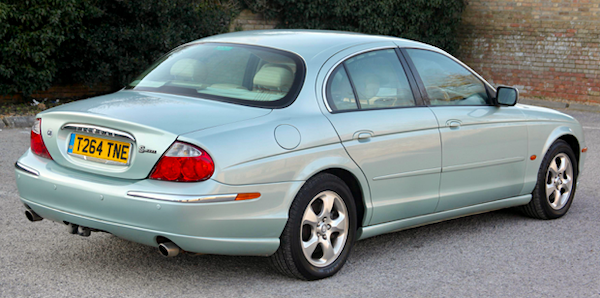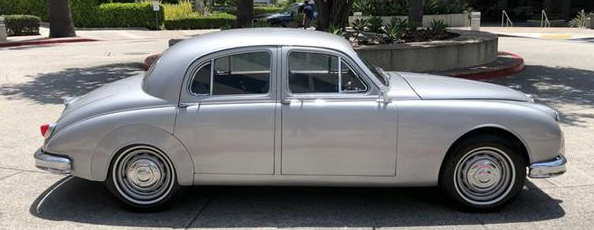Recently, I came across a Saoutchik design that was similar, yet much better. It was for a 1950 Talbot Lago T26 Record Grand Sport Coupé. As was the case for the Delahaye, I don't know how many such bodies were built. Based on photos found on Internet searches, there seem to have been at least two survivors, and possibly more were made.
The Dalahaye is longer, having a 116.1-inch (2950 mm) wheelbase, whereas that of the Talbot is 104.3 iinches (2650 mm), as the Wikipedia links above state.
Images of the Delahaye are from Barrett-Jackson auctioneers, and most or all of the Talbot are via RM Sotheby's.
Frontal design of the Delahaye 175 is largely standard Delahaye, aside from the flamboyant fender work by Saoutchik.
The upper grille frame outline is Talbot, but the rest of the design is by Saoutchik.
Interesting side styling. The chrome strip extending from the side of the hood to below he beltline to the top of the rear fender does all this in one sweep. This ties the otherwise somewhat fragmented design together. The rear fender bulge and the fadeaway front fender reduce visual bulk on what otherwise would have been a slab-sided 1949 design. That front fender side sculpting and its different paint color assist in this.
Note the narrower door and shorter passenger compartment. The fenderline is more "modern" than that of the Delahaye. It's higher, but has subtle shaping below the beltline.
The rear styling is clean and well-shaped aside from the heavy fender chrome.
This Talbot is remarkably brightwork-free for a Saoutchik design, though note the strip tailing abaft of the door, extending along the trunk lid. At least it's narrow.
Now for two additional Talbot images. This is a well-styled design in the context of 1950 and in the context of Saoutchik's normal flamboyance.
This example looks good in part because it lacks bumpers. What effect might they have?
Here's a photo of another Saoutchik Talbot, this via Bonhams. It has bumpers, but they don't degrade the design much.

















































